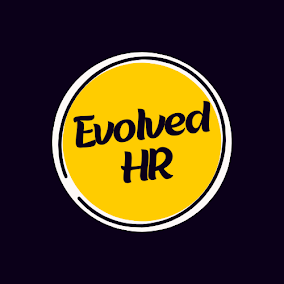In today's data-driven world, organizations collect and store vast amounts of employee information. From basic contact details to financial records and health data, this sensitive information requires careful handling to ensure both data privacy and security. Striking a balance between these two concepts is crucial for fostering trust with employees, complying with regulations, and protecting against cyber threats.
Understanding the Landscape:
- Data Privacy: Refers to an individual's control over their personal information. This includes the right to be informed about how data is collected, used, and shared, as well as the right to access, rectify, or erase it.
- Information Security: Focuses on protecting data from unauthorized access, disclosure, alteration, or destruction. This involves implementing technical and organizational safeguards to minimize risks and ensure data confidentiality, integrity, and availability.
 A Must Read Book: Click here to buy!
A Must Read Book: Click here to buy!
Navigating the complexities of data privacy and employee information security can be challenging. Here are some key considerations for achieving a harmonious balance:
1. Transparency and Trust:
- Be upfront about what data you collect, why you collect it, and how it will be used. Communicate data privacy policies clearly and provide employees with easy access to them.
- Empower employees with choices over their data. Allow them to opt-out of non-essential data collection, correct inaccurate information, and request data deletion.
2. Robust Security Measures:
- Implement strong access controls, data encryption, and intrusion detection systems to safeguard sensitive information. Regularly update software and security protocols to stay ahead of evolving threats.
- Conduct regular security awareness training for employees to educate them on best practices for protecting data, such as recognizing phishing attempts and avoiding password sharing.
3. Compliance and Regulations:
- Stay informed about data privacy and security regulations applicable to your organization's location and industry. Ensure your data practices comply with relevant laws, such as GDPR (General Data Protection Regulation) or CCPA (California Consumer Privacy Act).
- Appoint a data privacy officer responsible for overseeing data governance and compliance within the organization.
4. Building a Culture of Privacy:
- Foster a culture of data privacy within your organization. Encourage employees to value and protect their own data as well as that of their colleagues.
- Lead by example by demonstrating a commitment to data privacy in your own actions and decision-making.
Benefits of Achieving Balance:
By effectively balancing data privacy and employee information security, organizations can reap numerous benefits:
- Enhanced Employee Trust: A transparent and secure data management approach builds trust with employees, leading to increased engagement and loyalty.
- Reduced Legal and Reputational Risks: Compliance with data privacy regulations and robust security measures help mitigate the risk of costly fines, legal action, and reputational damage from data breaches.
- Improved Data Governance: Effective data privacy and security practices lead to better data governance, enhancing data accuracy, accessibility, and overall data quality.
Striving for the Sweet Spot:
Finding the right balance between data privacy and employee information security is an ongoing process. By prioritizing transparency, implementing robust security measures, adhering to regulations, and fostering a culture of privacy, organizations can create a secure and trustworthy environment for their employees and thrive in the digital age.
Remember, data privacy and employee information security are not mutually exclusive concepts. By working towards a balanced approach, organizations can protect sensitive information, empower their employees, and build a foundation for sustainable success.
Call to Action:
Start your journey towards achieving data privacy and employee information security balance today. Assess your current data practices, identify areas for improvement, and implement the strategies outlined above. By taking proactive steps, you can safeguard your employees' data, build trust, and ensure a secure future for your organization.
I hope this article provides valuable insights into the critical topics of data privacy and employee information security. Remember, striking the right balance requires ongoing effort and dedication, but the rewards are substantial for both employees and organizations alike.





.jpg)

.png)
No comments:
Post a Comment